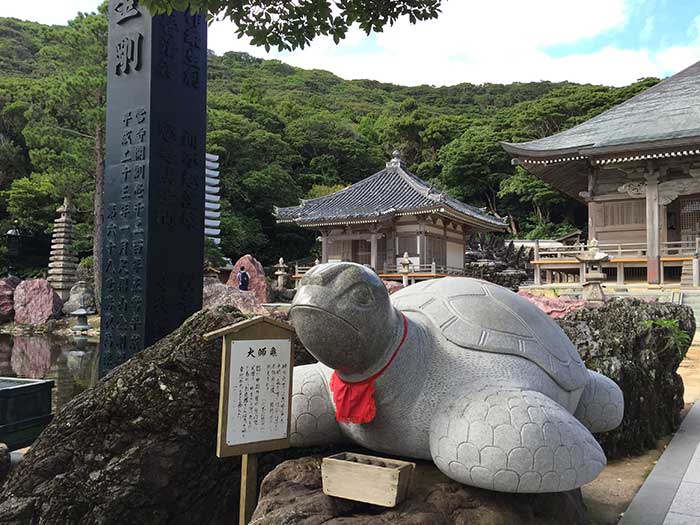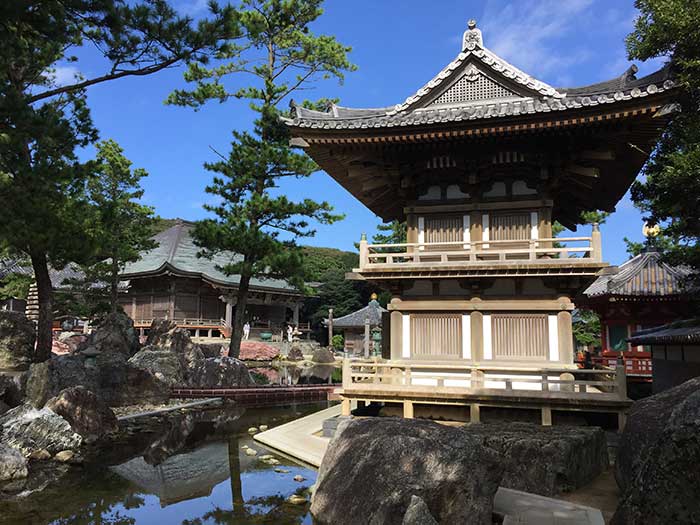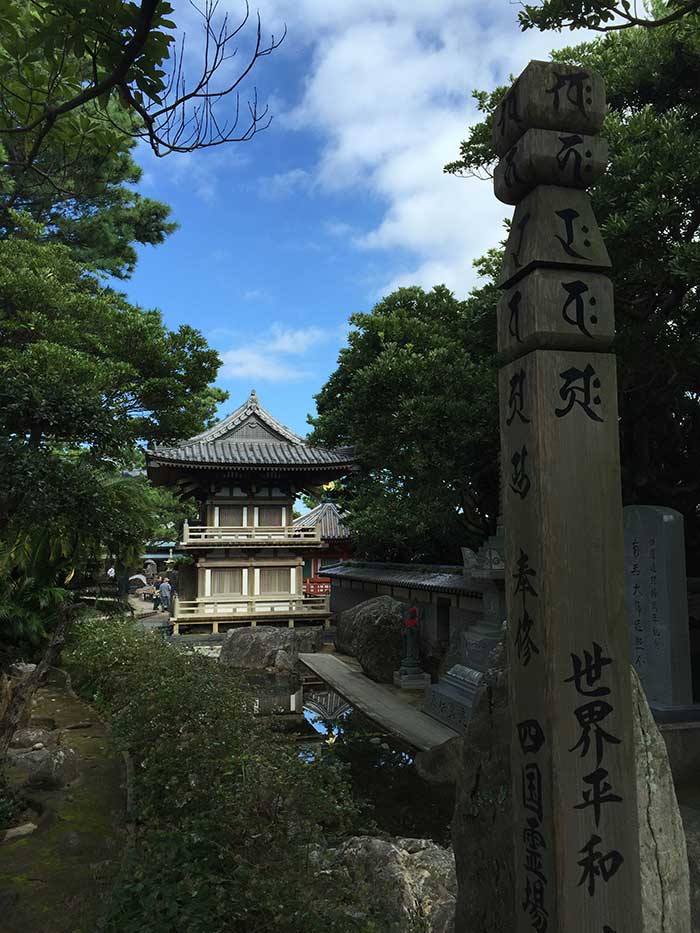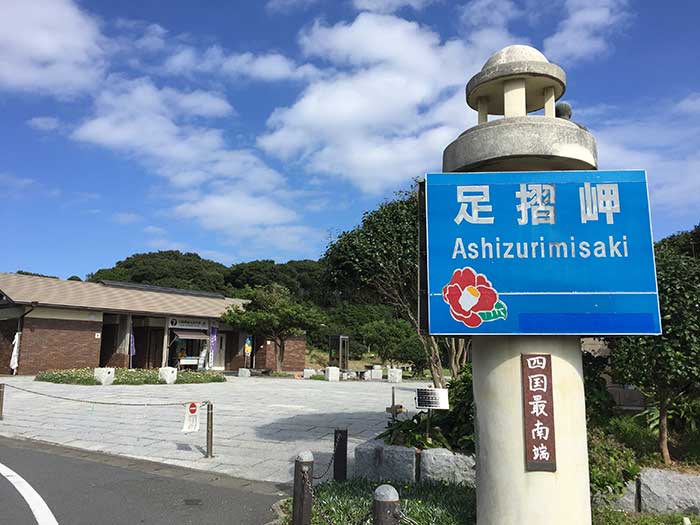Additional Information:
Founded by Kōbō Daishi (with the aid of Emperor Saga), the temple is located on the tip of Cape Ashizuri and commonly called Ashizurisan. It is modeled after Potalaka (Jp. Fudaraku), the Pure Land of Kannon. In fact, it is the temple from which the truly devout would set sail in search of Fudaraku (many pilgrims also left from Kumano, on Kii Peninsula). Kōbō Daishi also carved the honzon.
Located on the bluff looking out over the sea, the temple has always enjoyed the patronage of aristocrats, warriors, and noble clans like Minamoto, Chōsokabe, and Yamanouchi. It survived without damage throughout the normally destructive early Meiji years.
Ahshizuri means 'foot stomping,' and comes from a legend attached to this temple and described in an early 14th century book entitled Kagerō Nikki. Lady Nijō, the author, says that there was once a humble novice monk here who shared his food with another young monk who mysteriously appeared at the temple. Eventually, the novice's master caught on to this and, scolding him, forbade the novice from sharing any more food. When the novice monk explained this to his new friend, the new monk invited the novice to his own home to dine. The master followed and, as the two monks departed in a boat, shouted "Where are you going?" The reply, "To the land of Kannon." The master, realizing his mistake and grieving over his own pride and spiritual blindness, stamped his feet — leaving his footprints forever in the rocks of the cape.
Frederick Starr says that when En no Gyōja meditated here he was bothered by many Tengu (flying hermits) and was forced to exorcise them.
This area is, unfortunately, a favorite place for Japanese to commit suicide. Because of its reputation as the location from which you can reach fudaraku (Kannon's Pure Land), it is also thought to be a auspicious place to jump to your death.
This temple is located in Ashizuri National Park and of interest are the lighthouse and a statue of John Manjirō, the first Japanese immigrant to America in the 19th century. Manjirō-san's story is very interesting. A local fisherman who lived here in the 1800's, Manjirō had a boating accident off the coast one day. Assuming he would die, he was pleasantly surprised when he a) was picked up and saved by a passing boat and b) realized that the boat was a passing whaling ship and he had just been rescued by Americans.
The captain of the ship took a liking to Manjirō-san and took him home to Connecticut where he educated him and taught him western ways for 10 years. Because the Bakufu maintained a closed-door policy and no one was allowed to reenter the country after leaving, Manjirō thought that he has seen the last of his home. He was extremely happy, therefore, when he learned that the Bakufu had been overthrown and the Meiji restoration of 1868 allowed him to return home.
To make long stories short, Manjirō did return home, now educated, able to speak English, and able to understand the mores and manners of the Americans. He became a valuable tool for the new Meiji government and was used by them repeatedly. He was even included in the first overseas diplomatic mission to the US.









